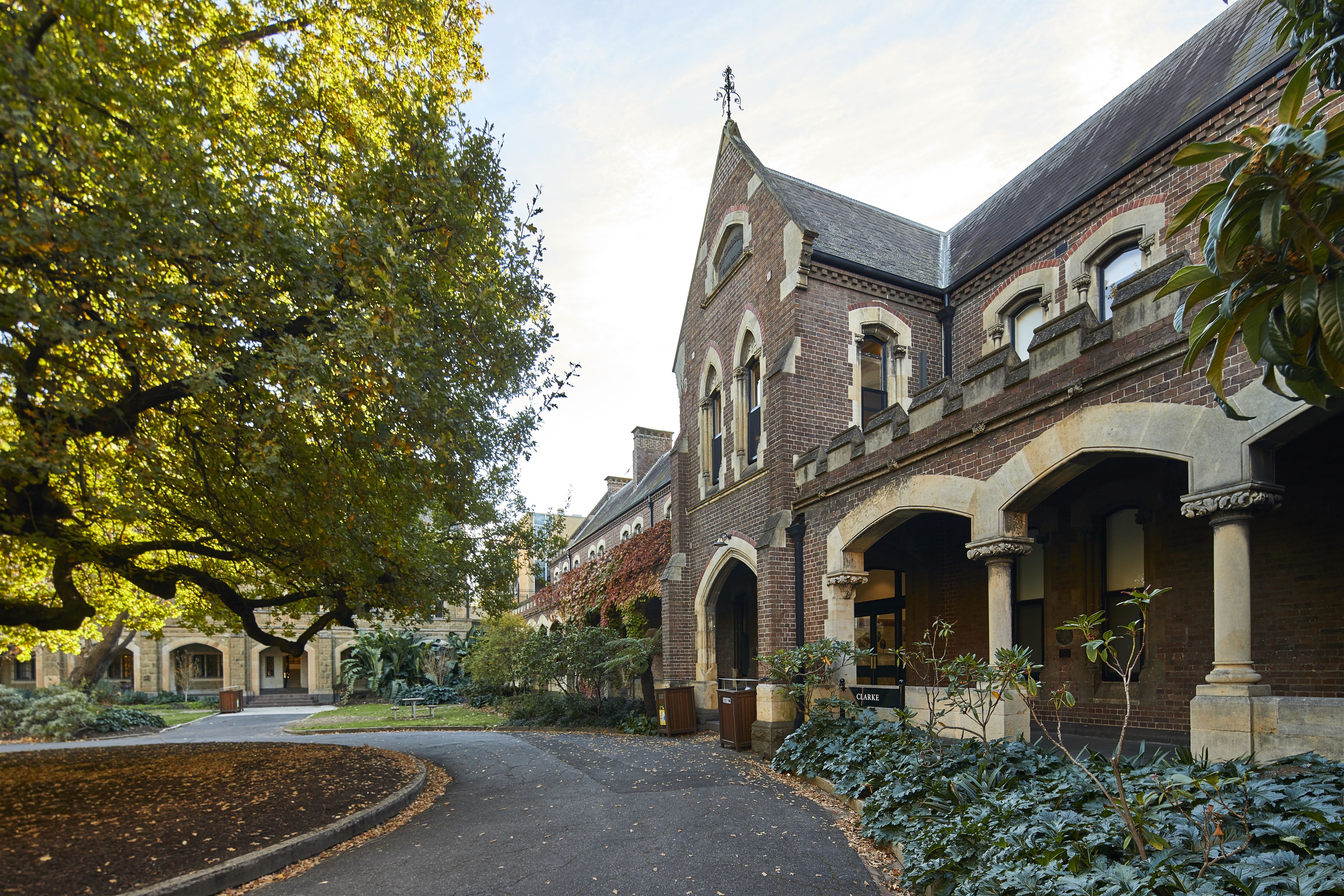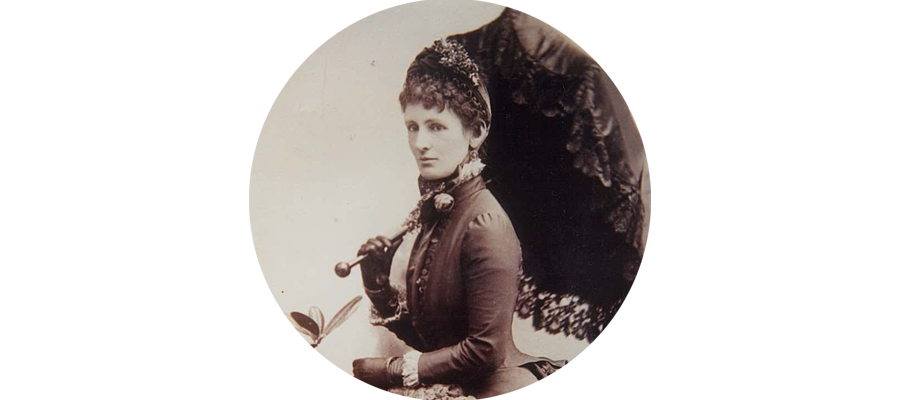Think big, give big

In April 1881, less than a decade after Trinity had welcomed its inaugural student and a mere three years after Bishops’ building had swung open its doors, the College found itself in desperate need of more accommodation. Applications for rooms at Trinity were so numerous a nearby house had to be rented to meet demand.
Ormond – Trinity’s first competitor – had opened a month earlier, and given the ‘new’ college had all the trimmings, Trinity was under pressure to produce an equally (or more) appealing offer. The College Council estimated that £5000 would be needed to fund a new wing, on top of a similar sum that was required to pay off debts.
Melbourne merchant Richard Grice was the first to step forward to assist, offering £250. An anonymous donor then pledged a similar amount, and other smaller amounts were gifted thereafter. This was not nearly enough, but the College’s fortune changed when pastoralist and businessman Joseph Clarke came forward with £5000.
‘Mr Clarke has not given his present grudgingly, but in the spirit of the freest generosity’, The Australasian newspaper told its readership.
To help put this sum into perspective, in 1881, residential fees, including tuition, were about £80 a year, and the average annual wage for a bricklayer in Melbourne was about £125. Relative to today’s prices, the gift was in the order of $2 million.

SIR WILLIAM CLARKE & JOSEPH CLARKE
SIR WILLIAM CLARKE & JOSEPH CLARKE
A generous duo
Born in 1834, the youngest of three sons to William ‘Big’ Clarke, Joseph had moved to Melbourne from Tasmania with his family in 1876 and bought a comfortable mansion in Toorak. He had inherited his father’s sizeable pastoral interests in Tasmania (in excess of 70,000 acres), held pastoral runs in Queensland, was director of the Hobson’s United Railway Company – in which his older brother William was also a major shareholder – and later had business interests in insurance and mining. William himself had earlier supported Trinity and, with Joseph’s contribution, there was broad consensus that the two brothers should be jointly recognised in name with the proposed new building.
Despite the generosity of Clarke’s munificence, a sum of £6000 was still urgently required to balance the College’s heavy debts. Warden Alexander Leeper pointed to a College that was ‘overflowing with students’ and one that had inadequate accommodation. The hardest pill to swallow was the fact some students had to be sent to Ormond.
The Warden continued to plea for donations, and in November, William E Stanbridge offered £600 to go towards the new building, and by May 1882, a further £6500 had accumulated through smaller gifts.
Building on the College’s 1869 master plan, the Sydney firm of Edmund Blackett devised a design for the new wing. A neo-Gothic building would be constructed at right angles to Bishops’, in corresponding Hawthorn brick, and would give form to the intended quadrangle proposed in the original master plan (although it would take almost 80 years for that notion to be realised, with the completion of the Cowan building in the late 1960s).
Built under the supervision of Melbourne architect William Pritchard, the new wing housed its first students in mid-1883. The building contained a club room (later to become the Junior Common Room), a billiards room (which is still popular to this day), bedrooms, and sitting rooms facing the quad, and brought Trinity’s residential capacity to 50 students (up from 30).
The construction cost £11,000, with Joseph adding an additional £1000 to his earlier gift, and Sir William Clarke gifting a further £3000. This reinforced the College Council’s earlier decision to honour both brothers by naming the new wing the ‘Clarke Buildings’ (later referred to as Clarke’s).
In 1888, The Argus wrote: ‘None perhaps, except those immediately connected with the management of the College, know exactly how much it owes to the liberality of Sir William and Mr Joseph Clarke.’
The Clarke family’s generosity only increased from there, and it fundamentally shifted the College’s educational offerings by bringing women into the fold.

LADY JANET CLARKE, AUSTRALIAN WOMEN'S REGISTER
LADY JANET CLARKE, AUSTRALIAN WOMEN'S REGISTER
Enter Lady Clarke
The first female student joined Trinity in 1883 and, as interest in the College from women grew, a terrace house was rented on Royal Parade to house the Trinity College Women’s Hostel. Janet, or Lady Clarke – Sir William’s wife – had grander aspirations, however.
Following a gift of £5000, the foundation stone was laid on 17 March 1890 of what would initially be known as the ‘Janet Clarke Building’. It was the first stage of what Lady Clarke envisaged as an eventual quadrangular block immediately north-west of the building named after her husband and brother-in-law.
At the foundation stone laying ceremony, Warden Leeper identified several types of supporters of the College. One group, he noted, possessed great wealth during their lives but ‘gave very little and very grudgingly’ during their own lifetime, leaving a significant sum as a bequest.
Not to be discredited, he nonetheless expressed some reservations towards those who ‘only left to others what they could not take away with them.’
However, another category, he said, ‘gave large sums for public purposes and still larger sums in private charity, and gave time and sympathy with them.’ To rapturous applause, he acknowledged it was to this category that Lady Clarke and Sir William belonged.
The Janet Clarke Building, housing the Trinity College Hostel, formally opened a year later. Not only had Lady Clarke funded the initial construction but she had subsequently contributed a further £1000 to cover the building’s fittings and furnishings.
In 1921, the building’s name was changed to ‘Janet Clarke Hall’, but decades of female students would pass through as collegians of Trinity. In 1961, Janet Clarke Hall became an independent, women-only college, then became co-residential a little over a decade later.
The power of giving
The sentiment of the Clarke family’s incredible generosity throughout Trinity’s seminal, founding decades was perhaps best described by the Governor of Victoria, the Earl of Hopetoun, in 1891:
‘They not only have the power to give, but they are not afraid of giving, and they are satisfied to live in the country in which their money has been made, and to spend it with those among whom they have been brought up.’
This notion has since been repeated many times over as Trinity has been the beneficiary of countless donations from generous supporters, who, like the Clarkes, have played – and continue to play – a significant role in helping the College offer the best educational opportunities to its students.
A new era for our Dining Hall
The beating heart of Trinity College will undergo major renovations in 2023.



